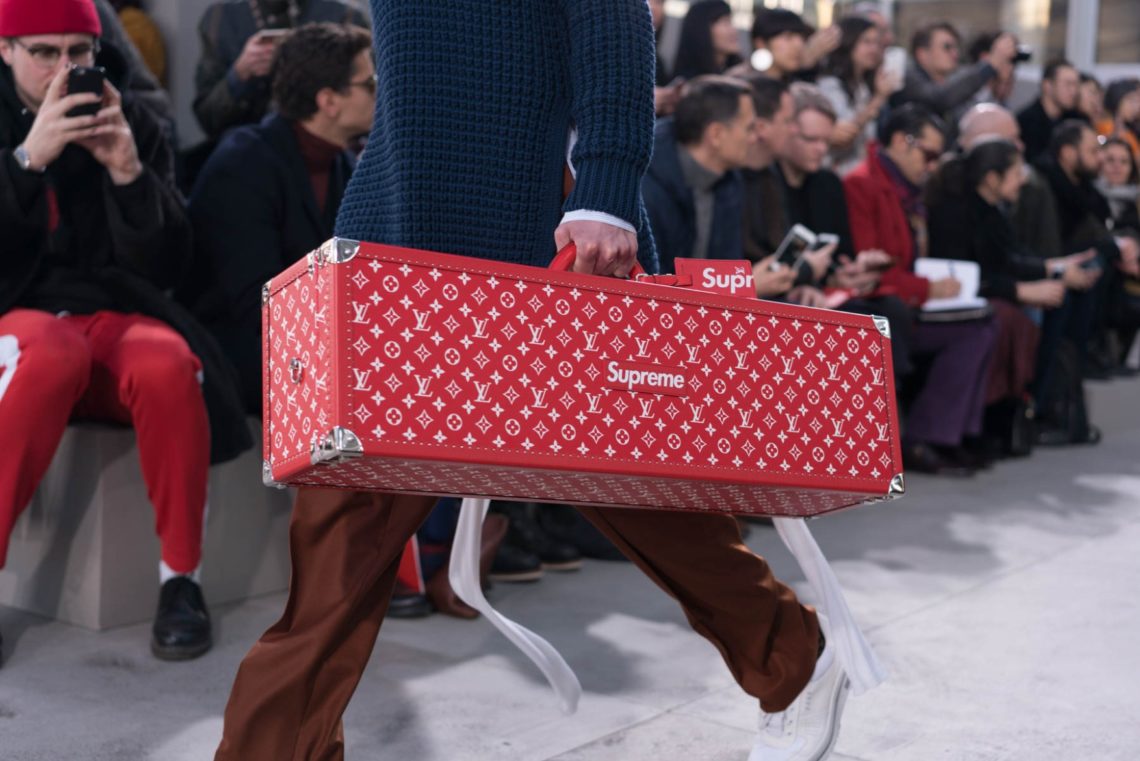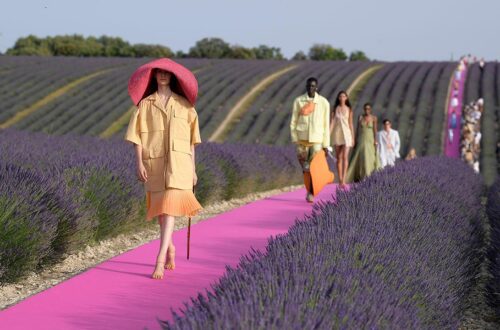The fashion and luxury industries as we know them are undergoing a tremendous change to keep up with the new generation of consumers—who are set to account for 45 percent of the global luxury market by 2025— and their new shopping behaviours. Normal marketing strategies don’t cut it for most brands anymore, and this is where the business of ‘hype’ comes in.
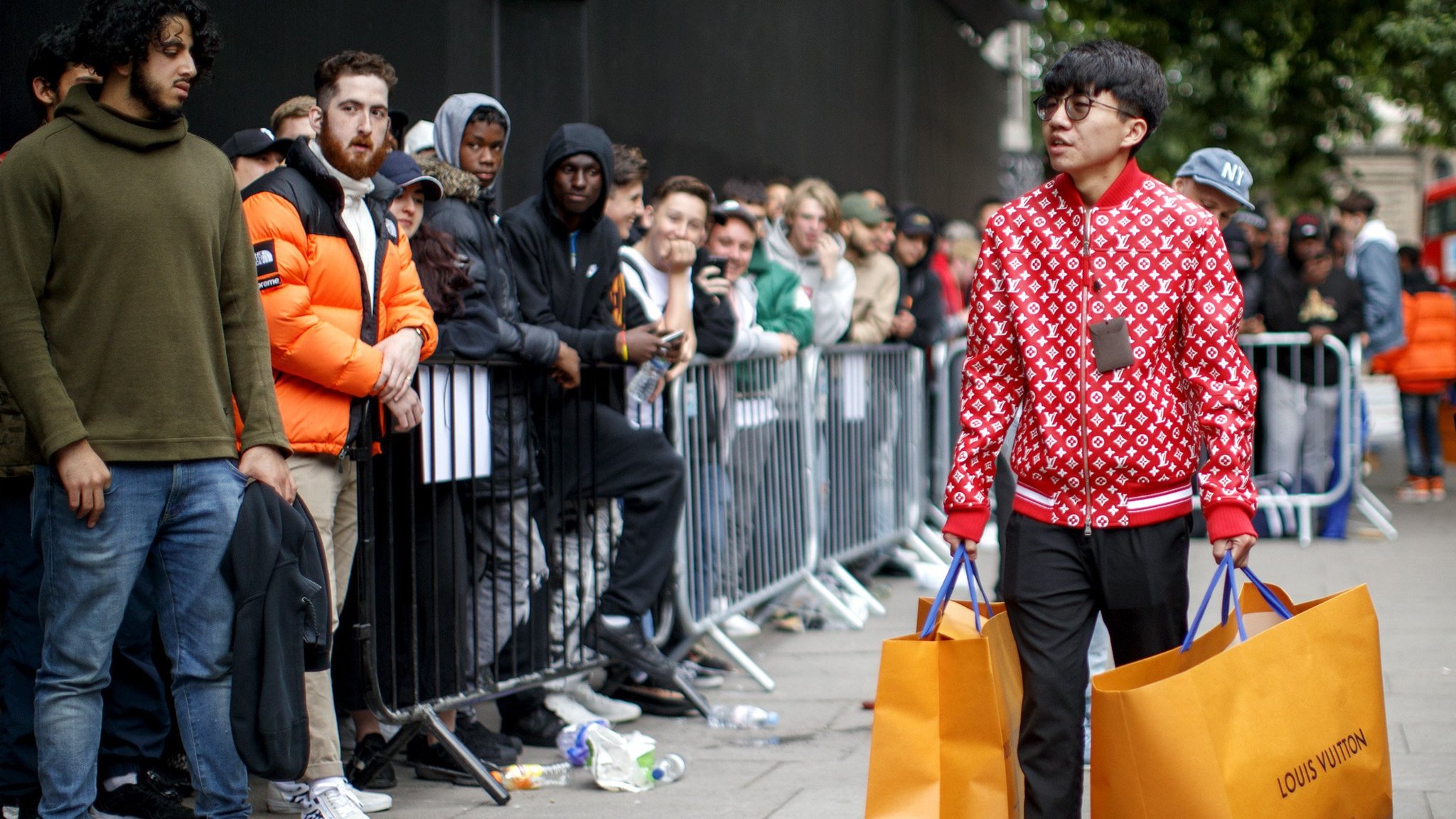 Supreme x Louis Vuitton © Tolga Akmen
Supreme x Louis Vuitton © Tolga Akmen
So what are the keys to a successful hype fashion brand? The first rule is that there are no rules. Unlike traditional fashion brands that release collections with the seasons and undergo a long period of professional training, they implement the ‘product drop’. This means that the products are offered in limited quantities in select locations without much of a notice in advance, leading to people waiting in line for hours—even overnight—to get their hands on them.
Social media plays a huge role in drop culture. “Brands are struggling to get coverage on traditional media these days, so they have to do things to stand out on social media and cut through all the noise.”, said Alison Levy Bringé, Chief Marketing Officer at fashion and luxury data analytics firm Launchmetrics. Drops reproduce the same kind of excitement that fashion weeks bring, which give brands 800% more exposure than they get the rest of the year. For example, Rimowa’s collaboration announcement with skateboarding brand Supreme had 4 times more impact than their regular posts. They not only create buzz, but also help the brand form an engaged community.
Some luxury brands also applied this method of retail, especially in their collaborations with streetwear designers. One of the most famous examples of this is Louis Vuitton’s collaboration with Supreme in 2017, when we saw the first drops of streetwear starting to make its way into luxury. The collection had Louis Vuitton wallets, luggage and phone cases covered with the Supreme logo. The prices were only justifiable by the hype surrounding the release, with hoodies selling for $935, and resell prices reaching as high as $9000.
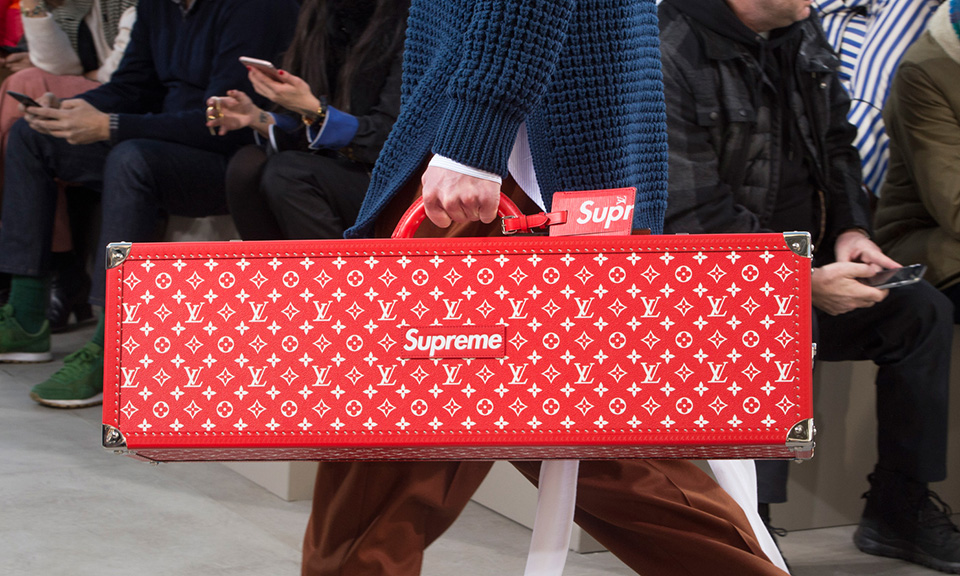 Supreme x Louis Vuitton Fall 2017 Menswear
Supreme x Louis Vuitton Fall 2017 Menswear
“The price points are astronomical. But when you buy luxury streetwear, you’re not paying for the most handcrafted, highest quality piece of garment. You’re buying into a subculture. It’s something you either are a part of or want to be a part of, and when you think about it, that’s what any luxury brand has always been about,” said Mick Batyske, a DJ, streetwear influencer and investor.
This drop also means that fashion doesn’t have to be bound by seasonal deliveries. The new generation of shoppers do not want to wait six months for new collections. Pioneered by skate brands like Palace Skateboards, the delivery of fashion is also changing. Most hype brands do not stage shows or release any information about what’s to come.
Frequent and non-predeclared releases helps these brands stay relevant and they avoid becoming boring, which is another key to the hype methodology. Before, retail was all about playing it safe. Even if the runway shows presented exciting new designs, stores always toned it down. But now, this attempt to play it safe would be the least safe thing to do, because nobody wants anything less than unique.
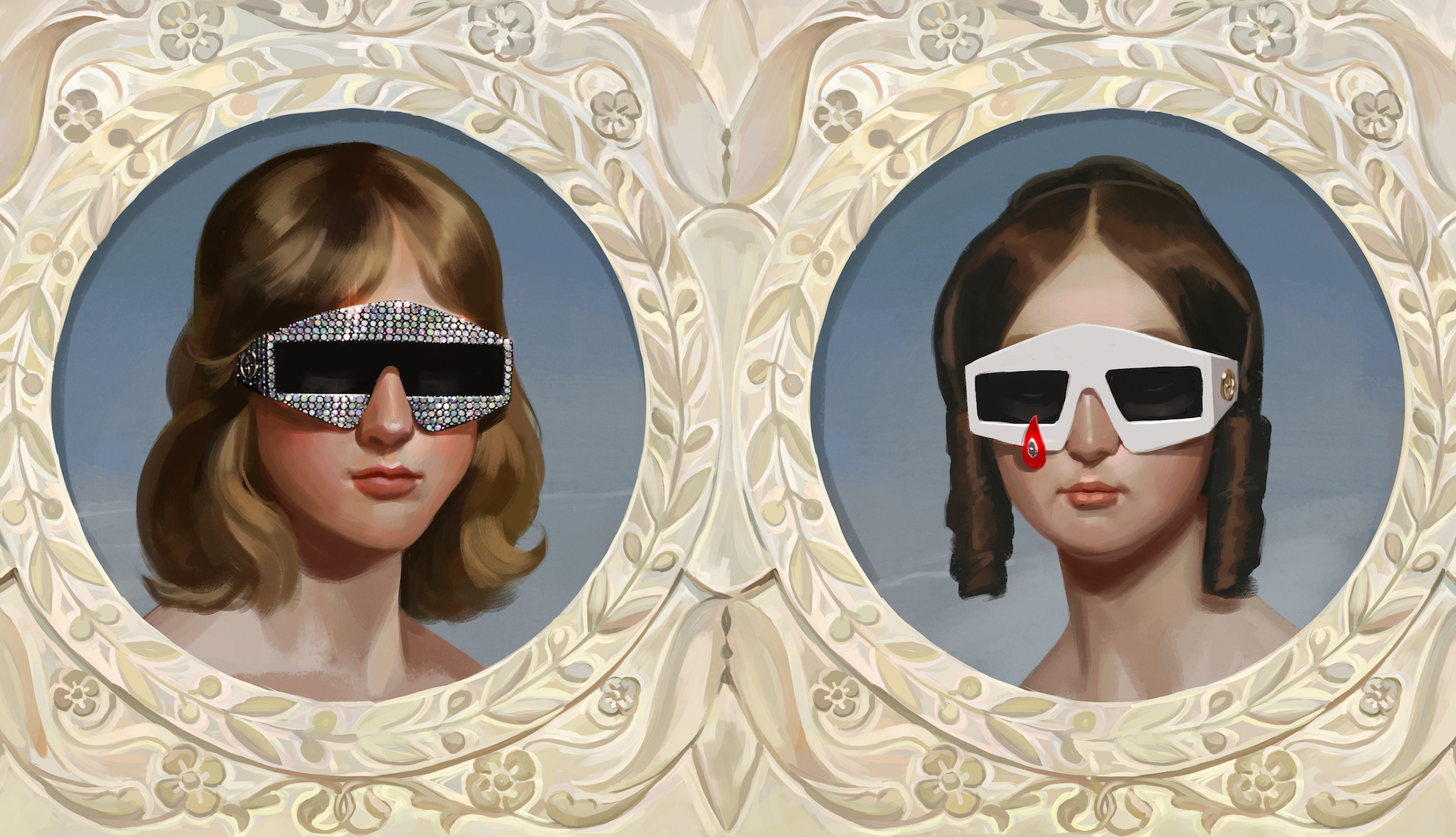
Utopian Fantasy Gucci SS18 campaign by Ignasi Monreal
The most obvious example would be Gucci, a €6.21bn company with a rise in operating profits largely driven by millennial spending of 61.9 percent. “The quirk of Gucci has become commercial,” says Helen David, the chief merchant at Harrods. “The louder, the more fun, the more colourful it is, the more we are likely to sell it.”
But the real question is, will this new generation of consumers that always strive for something new, ironically also get bored of the hype and drop culture? After all, fashion is all about change. Or will it evolve to meet the standards of a new kind of demand? Whatever the future of this type of business may bring, brands will surely find some way to keep the attention of consumers and create another sort of ‘hype’.
By Selin Hatunoğlu

